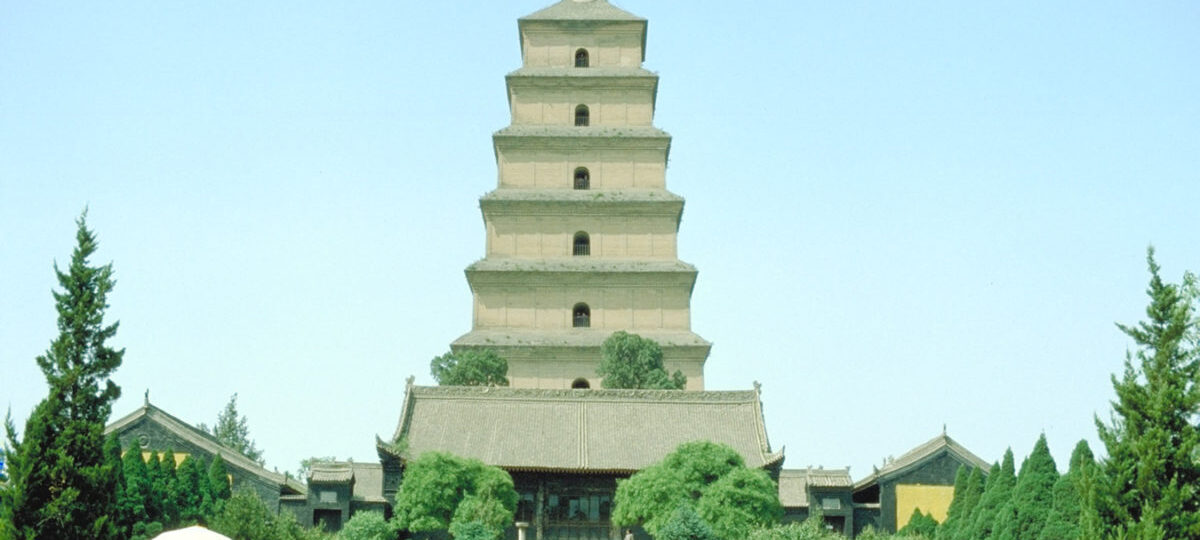Giant Wild Goose Pagoda or Big Wild Goose Pagoda or Great Wild Goose Pagoda,
is a monumental Buddhist pagoda located in southern Xi’an, Shaanxi, China. It was built in 652
during the Tang dynasty and originally had five stories.
It was rebuilt in 704 during the reign of Empress Wu Zetian and its exterior brick facade was renovated during the Ming dynasty.
One of the pagoda’s many functions was to hold sutras and figurines of Gautama Buddha
that were brought to China from India by the seventh-century Buddhist monk, scholar, traveller, and translator Xuanzang.
Today, the interior walls of the pagoda feature engraved statues of Buddha by the renowned 7th-century artist Yan Liben.
This pagoda was added to the World Heritage List,along with many other sites along the Silk Road,
as part of the “Silk Roads:the Routes Network of Chang’an-Tianshan Corridor” site in 2014.
This construction of rammed earth with a stone exterior facade collapsed five decades later.
The ruling Empress Wu Zetian had the pagoda rebuilt and added five new stories by the year 704.
History
A massive earthquake in 1556 heavily damaged the pagoda and reduced it by three stories, to its current height of seven stories.
The structure leans very perceptibly (several degrees) to the west.
Its related structure, the 8th century Small Wild Goose Pagoda in Xi’an,
only suffered minor damage in the 1556 earthquake (unrepaired to this day).
The Giant Wild Goose Pagoda was extensively repaired during the Ming dynasty (1368–1644) and renovated again in 1964.
The pagoda currently stands at a height of 64 m (210 ft) tall and from the top it offers views over the city of Xi’an.




